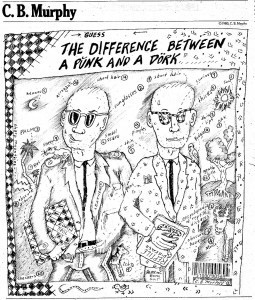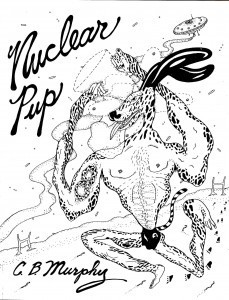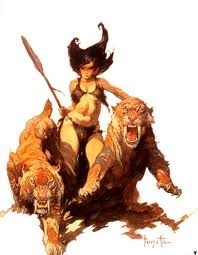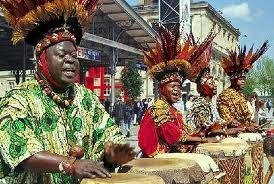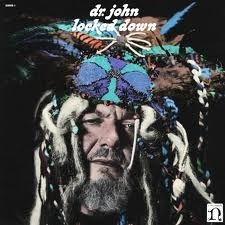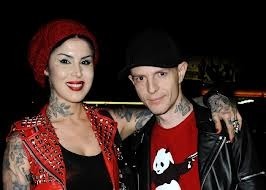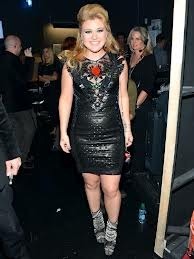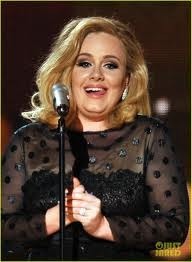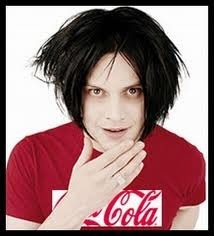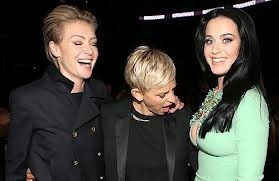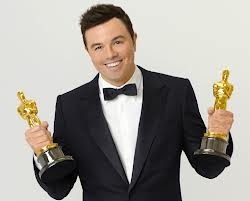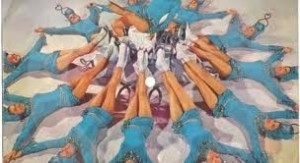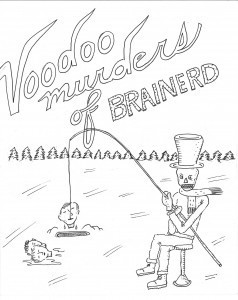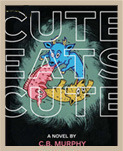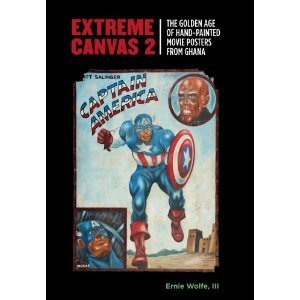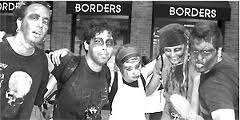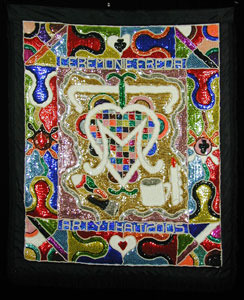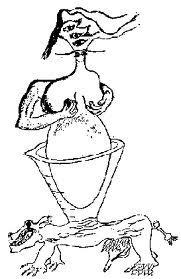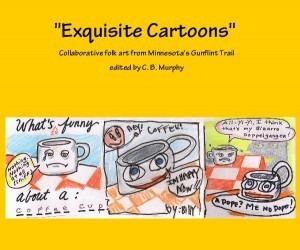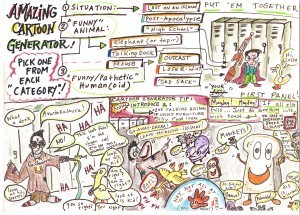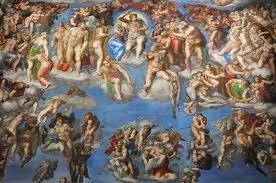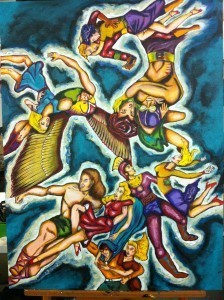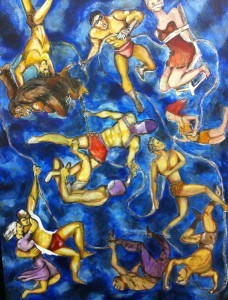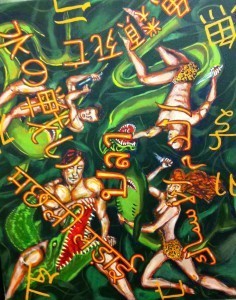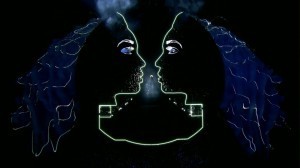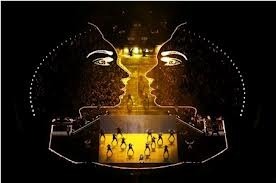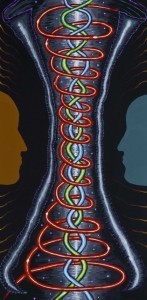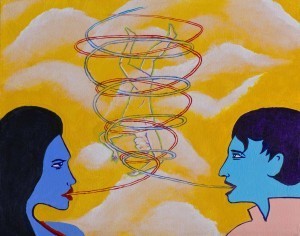C.B. Murphy's Blog, page 9
April 2, 2013
March 29, 2013
End of Men (novel) video summary by C. B. Murphy
March 21, 2013
The Return of Golden Face
Check this out. My son Nic had to make a video for his class on Hong Kong and Taiwanese film. I’m Golden Face by the way.
March 8, 2013
C. B. Murphy on the origins of the Punk-Nerd
A long, long time ago there was a difference between a Punk and a Dork (nerd). This cartoon of mine ran in the Chicago Reader in the 1980s (before most of you were born). In ancient times punks were tough and nerds were not. Nerds were scholarly and had reptiles as friends/pets. They were “funny” but not in a good way. But Time has marched on and merged these two subcultures into something new where “nerdy” guys can proudly walk into bars and display themselves without fear of ridicule. Nerdy gals, too!
I give you Portlandia!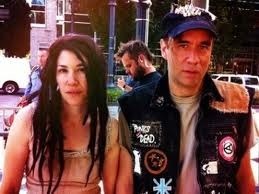
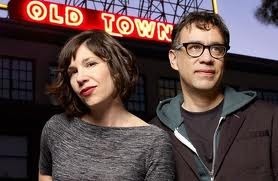

March 6, 2013
History of Zoographico Press
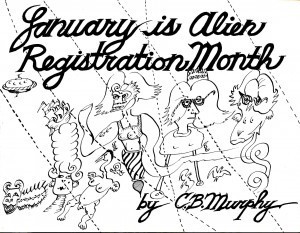 In ancient times, before personal computers and print-on-demand (POD) publishing, there was a phenomenon called “artists books.” These were often handmade books (sometimes by “famous” painters, etc.) and zines made by punks (whatever). Finding them and buying them was tough. Sometimes they were sold in “head shops” or were given a small space in a comic book store. A version of them (the upper class version you might say) ended up in museums, sometimes in exhibitions and sometimes in museum gift shops. I was always attracted to the idea of an artist book. Sure “underground comics” existed and you could buy them at the larger urban magazine stores which have largely disappeared. R. Crumb et al. And there was RAW magazine, a wonderful quirky thing run by Art Spiegelman (of “Maus” fame), that showcased all kinds of narrative and non-narrative “comics.” The narratives have grown up into a real market we now call graphic novels. This is a good thing, but a different thing than the earlier free for all of forms.
In ancient times, before personal computers and print-on-demand (POD) publishing, there was a phenomenon called “artists books.” These were often handmade books (sometimes by “famous” painters, etc.) and zines made by punks (whatever). Finding them and buying them was tough. Sometimes they were sold in “head shops” or were given a small space in a comic book store. A version of them (the upper class version you might say) ended up in museums, sometimes in exhibitions and sometimes in museum gift shops. I was always attracted to the idea of an artist book. Sure “underground comics” existed and you could buy them at the larger urban magazine stores which have largely disappeared. R. Crumb et al. And there was RAW magazine, a wonderful quirky thing run by Art Spiegelman (of “Maus” fame), that showcased all kinds of narrative and non-narrative “comics.” The narratives have grown up into a real market we now call graphic novels. This is a good thing, but a different thing than the earlier free for all of forms.
My first Zoographico Press book was a collection of drawings called “January is Alien Registration Month.” This was long before immigration reform made ‘alien’ a controversial term. At this time, I came across the phrase and thought how odd that the US government would expect aliens (illegal immigrants or “little green men”) to register. Where and why? Many of the drawings, such as the ceiling of the Grande Ballroom (Detroit, MI) presaged the whole “decline of Detroit” (or “ruin porn“) that has become popular, especially in France.
My second Zoographico Press book was a fractured attempt (in the sense of Rocky and Bullwinkle’s Fractured Fairy Tales) to create a narrative character. The best I could do was draw a series of vignettes “from the life of” my character who really did have a backstory. He was an irradiated Harlequin Great Dane, anthropomorphized into a creature who impersonated people like James Bond. Don’t ask. The real focus was the drawing style inspired by the Chicago Imagists and the “Hairy Who” painters including Jim Nutt and Roger Brown.
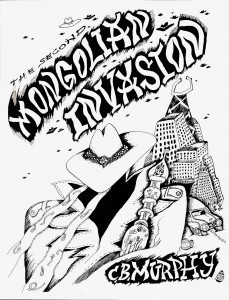 The “Nuclear Pup” was a roaring success in my own mind. And whose mind matters, eh? The third and final book in the “offset printing” trilogy was “The Second Mongolian Invasion.” This will take a bit of explanation. As a child I was a prescient diversity advocate in that I wanted to be the “indian” (Native American) in cowboys-and-indians, Tojo in WW II games and a Saracen (Muslim) in our childish reconstruction of the siege of Jerusalem. I don’t know why. Genghis Khan held particular fascination for me. The size of his empire, the ferocity of his warriors, mountains of skulls, were so amazing — why wasn’t everyone talking about them? In my childish hubris, I felt like I had rediscovered them. Fast forward to where The Second Mongolian invasion imagines these entities as magical, psychic, and an alien invading race. Postulating a world where these entities had “taken over” (think of Philip Dick‘s “The Man in the High Castle“) and were already in a sort of decadence,
The “Nuclear Pup” was a roaring success in my own mind. And whose mind matters, eh? The third and final book in the “offset printing” trilogy was “The Second Mongolian Invasion.” This will take a bit of explanation. As a child I was a prescient diversity advocate in that I wanted to be the “indian” (Native American) in cowboys-and-indians, Tojo in WW II games and a Saracen (Muslim) in our childish reconstruction of the siege of Jerusalem. I don’t know why. Genghis Khan held particular fascination for me. The size of his empire, the ferocity of his warriors, mountains of skulls, were so amazing — why wasn’t everyone talking about them? In my childish hubris, I felt like I had rediscovered them. Fast forward to where The Second Mongolian invasion imagines these entities as magical, psychic, and an alien invading race. Postulating a world where these entities had “taken over” (think of Philip Dick‘s “The Man in the High Castle“) and were already in a sort of decadence,
I tried to imagine how they might fare, what psychoses they might develop (such as the infamous “chakra flashing”).
One more word on the world of the Second Mongolians. I thought I had left it behind, but the concept is arising once again in my new novel “Bardo Zsa Zsa.” Watch for it.
Note: All books are available at Amazon.com
February 22, 2013
Walking Dead at a (real) prison
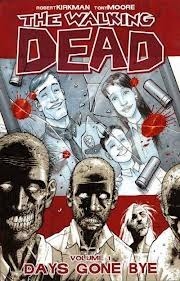
I am a volunteer teacher in a level four (that’s four out of five, five being serial killers) prison in Stillwater Minnesota, built in 1914. I’ve been doing it for five years, once a week, so I know the inmates (25) in our program. They range in age from 19 to 70, and are white, African-American, Hispanic, Hmong, Thai, and Somali.
Whether you know anything about “prison art” or not, you might imagine much of it emanates from an interest in tattoos, graffiti and fantasy art ala Frank Frazetta with an emphasis on muscular scantily dressed Neolithic warriors living harmony with ferocious beasts.
For some time I have been after someone to “get into” graphic novel (making) as I thought the world of the prison was a natural place to foster this kind of skill. They have the stories, the talent and the time. Lots of time. I bought in the Idiot’s Guide to Creating A Graphic Novel to encourage them.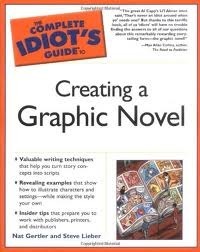
My own knowledge of all things “graphic novel” arises from my two boys who have been reading them for years and putting them in front of me. There’s a great store in the Twin Cities, call Source Comics and Games. The hooked me on “Y, the Last Man” and now “Preacher.” Years before the AMC show of the Walking Dead, the graphic novels were hanging around my house, but somewhat unbelievably, I never read them.
Some of these guys have been in here a long time. I forget. Finally one of them, shaved headed, tattooed, said he didn’t know what a graphic novel was. I looked over our collection and decided on two finalists: Walking Dead Vol. 1 and Sandman #1. I took them both into the prison, but left the Sandman in my desk drawer. The black and white images of The Walking Dead, plus the fact that they do get cable TV here (yes, rather amazingly) and many watch the show. They gathered around it, paging through it. One guy said, “It’s just like watching the show!” I haven’t seen any results yet, but I’m sure something will come out of it.
February 13, 2013
Anthropology of the Grammys
I find it odd how little contemporary anthropology (study of tribes, for shorthand) is done given that so much of our culture is based on tribalism. Music is especially tribal as it gives people clear choices between styles with accompanying language. Though “crossover” is always an issue as is the constant mutation with a genre, the base genres are widely understood. Under Electronica Wikipedia lists twenty two major categories that break down further within each. We need not get overly complex to make some basic points. Below I am using tribes loosely based on the the major categories or music: Hip Hop (Rap), Country, R&B, Pop, Rock (Metal), Alternative (Punk), Electronic (Dance).
1. The Grammys may be one of the few places that the tribes meet respectfully
Example/Evidence: Meet the Tribes
Though many people “enjoy many different kinds of music” it is fair to say that each major category represents a culture or tribe. The tribes can be respectful and even “work together” to “make this great event possible,” but they have checked their weapons at the door. The assumption is that you clap for music you hate. The country star who thinks rap represents urban decay and amoralism claps and the gangsta rapper claps for the country star who he thinks is an inbred racist throwback.
Alternative – Brooklyn – scruffy; liberal to anarchist, anti-capitalist; neutral to hostile towards religion; accepting of gender role experiments; drug friendly, especially marijuana
Rock – Detroit – neohippie scruffy to retro “biker gang” but inclusive of “whatever you want,” liberal to anarchist, anti-capitalist, neutral to hostile to religion (except where there is crossover with country), accepting of gender role experiments, drug friendly, friendly toward all drugs, with alcohol and marijuana in equal esteem
Country – Dallas – scruffy to dressy (males scruffier, females dressier); mildly liberal to conservative; generally embracing of traditional religion; not overly friendly to gender role experimentation but capable of tolerance; alcohol friendly, and mildly tolerant of other drugs, (especially if part of a binge); can discuss addiction in lyrics
Rap - Philadelphia – dress tends toward hyper-stylized and eccentric; liberal; diverse opinions on religion (from hostile to embracing given Gospel roots); mildly accepting of gender role experiments provided done with style; drug friendly, from hard street drugs to alcohol and marijuana and beyond
R&B – New Orleans – scruffy to hyper stylized and eccentric; liberal; diverse opinions on religion (from hostile to embracing given Gospel roots); mildy accepting of gender role experiments; tolerant of drugs from hard street drugs to alcohol and marijuana
Dance - New York – dressy to hyper stylized and eccentric; liberal to apolitical; no opinion on religion; very accepting of gender role experiments; drug friendly, tending toward “newer” and designer drugs
Pop (and Traditional Pop) – Chicago – tends to be “dressier” and upscale with nods to Big Bands and piano bars, but can also embrace neohippie scruffiness; somewhat apolitical though lean left; somewhat disinterested in religion but lacking a hostile edge; accepting of gender experimentation; friendly toward all drugs
2. A “mono-cultural” truce dominates most awards ceremonies, but it is superficial and temporary. There are serious divisions of the tribes from each other and within tribes, the sub-tribes can be hostile to each other.
Example/Evidence: Religion
Though you might hear the word “God” slip out at the Oscars or the Golden Globes, it is de rigueur at country awards celebrations. “Glory to God” there embarrasses no postmodern Reddit atheists. All the religions sit in the audience at the Grammys.
3. The cultures have dress codes for men and women that reflect their beliefs about gender.
Example/Evidence: Some comparisons in clothing
Women tend to “dress up” in all cultures, though country women (and eccentrics like Adele) can get away with being a bit zaftig (chubby) because their culture supports them. This support for non-thin women can be extended to African-American women as well, though they were not much in evidence in 2013. Though it is not unknown for women to dress down (punks like Patti Smith) or dress “like men” this was not much in evidence at this event other than Ellen.
Men often “dress down” in most categories by wearing street clothes, including ripped jeans, leather jackets and mis-matched shirts. Except in African-American dominated categories where the norm is creating a personal statement of style that somehow is never judged as unmasculine. In fact, it’s a statement of hyper-masculinity, as in “we are beyond the trivial signals of white culture.”
Alternative white group males can dress post-masculine. Like the African Americans, they may strive for hypermasculinity, but mainly they are influenced by a “femnist” culture that plays down the differences between men and women. Men can wear makeup and nail polish and not necessarily be trying to make a statement about being feminine or gay, but that they have expanded the role of the man via their creativity. They don’t need to abide by the rules of “old school” masculinity (see Country).
Country men can dress down but as a group tend to uphold a traditional costume including: cowboy boots, cowboy hat, cowboy shirts, and cowboy belts. They tend to be the most adherent to the idea that men have deep voices, even if they “allow” a certain degree of falsetto to enter into their melodies. It is also worth noting that the “southern accent” is still quite prominent in this genre where many of the others, particularly Rock, may have a range from southern, to urban dialect, to British, etc.
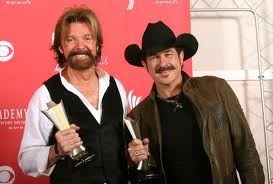
4. The LA tribe is the dominant tribe
Evidence/Example: Success
The LA tribe (that dictates the terms of the monoculture described above) positions itself as highly tolerant and liberal, but it has a “hard edge” in its valuing of money and success. You do not get invited to the Grammys unless you are making money. Big shots only; pecking order is in place. LA likes big shots and can give them plenty of freedom of expression and dress provided they continue to deliver.
But if you fall from grace, the LA culture isn’t interested in you. In other words, despite being “liberal” they are hardcore capitalists (who often decry capitalism in other areas of the economy). They are hyper competitive and a bit nostalgic in their embrace of tradition (“same every year only better”). Their assumptions about stage acts (“numbers”) reference a respect for Broadway (and Busby Berkeley) extravaganzas that are unlikely ever to be judged as over the top or “too much” when they are in control of the venue.
February 8, 2013
Voodoo Murders of Brainerd
To my fans eagerly awaiting the promised release of the novel VOODOO MURDERS OF BRAINERD, I have some disappointing news. I have put the project on “ice.” Why? Well, a couple of reasons. One is what I am calling a TONAL SHIFT in my work, away from literary-oriented novels and towards…well, we’ll get to that.
My two novels, CUTE EATS CUTE
and END OF MEN
were both conceived and executed under the premise that my goal was to “be” a novelist, to be known as a “novelist,” and in my dreams a “famous novelist.” Though I wouldn’t hang up on a reviewer for the New York Times, I am shifting to what I call on my website Creative Lab. This encompasses all the various creative activities I am involved in, including, but not limited to: “novels,” graphic novels, books of art, teaching art in prison, books combining art and writing, paintings (real paintings with paint on them), and various sculptural objects (like skulls made of tiny rocks). What have I left out? My hobbies and collections, for example my current obsession with hand-painted Ghanaian movie posters and my “homages” to them.
VOODOO MURDERS OF BRAINERD was originally conceived as a “scam plot” story, something along the lines of “The Music Man” meets “The Grifters” by way of “Angel Heart.”
The main character was partly inspired by Charles Arrowby from Iris Murdoch’s 1978 novel “The Sea, The Sea.” My character, James, is a rather unsuccessful antiquities dealer in St. Paul who retires to his family’s aging estate in Brainerd, MN. Kicked off by a Peace Corps stint in Haiti, James ended up collecting “voodoo” objects which he showed to a select clientele in the back room of his otherwise mainstream art and antiquities gallery. James’ younger assistant, Mara, is both a part-time lover and his Internet mentor. She wants to put his inventory online, creating a business he can run from quasi-rural Brainerd (Minnesota’s all season “playground”).
Another reason for moving “back” to Brainerd for James is that he will be near his estranged and druggy son, Isaac. Once James is established in the old mansion, he realizes or rather Mara realizes that Isaac is stealing objects from his collection and placing them on “occult” and magic sites which is a different niche than James main collection.
In the original plot, a scam artist named Kamala (survivor of Katrina now based in Houston) sees Isaac’s postings of a stolen Haitian “voudou slave flag.” (See below). She contacts him and claims the object has not only occult powers but comes with a curse on it. Kamala hires local “zombie street performers” from Minneapolis to play Haitian demons materializing around Brainerd.
Unfortunately one “scare incident” leads to a death, so the local law enforcement gets involved. Unbeknownst to Kamala, the research she has done on the cursed slave flag (revenge curse) is accurate but academic. The curse is real and soon “real” Haitian gods are materializing about town and causing mayhem.
Stay tuned for more. It sounds good. Maybe I should finish it.
February 7, 2013
Graffiti and the Sistine Comics series
I’ve never been a huge fan of graffiti (at least the “look at my funny writing style” below) despite the fact that in “my genre” of painting (Pop Surrealism) it’s considered part of the spectrum. This spectrum also includes tattoos and car art, at least according to the main promoter of the genre, Juxtapoz (magazine and website). My Apollonian self (see Nietzsche or Paglia) found the street crime aspect of graffiti mildly distasteful despite its history (see ancient Rome).
It’s only recently in my Sistine Comics Series of paintings that I have decided to “study” graffiti and see where it is relevant to my work and therefore inspiring.
First of all, what are Sistine Comics? This series evolved from drawing cartoons with my kids (we call this process Exquisite Cartoons) after the Surrealist “game” of group composition called Exquisite Corpse.
In the “corpse” style of drawing you fold a paper so that the next artist can’t see which part of the body you drew, so in the end you have a human figure of sorts composed by four different artists. In our adaptation, you divide a page into six cartoon squares and each artist draws in one square and passes it to the next artist who may or may not choose to duplicate the style or follow the story of the preceding artist.
While drawing the Exquisite Cartoons,
I got into copying images from classic 1950s Comic Books, like. Then I began to use this premise in my paintings. I would get accurate reference from books such as 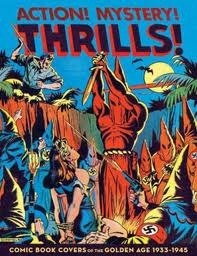
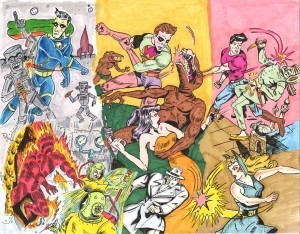 I’m not sure where the “Sistine” part came in. I’m not a huge Michelangelo fan (though totally appreciative of his genius to be sure), but I wanted my borrowed figures to float on a background (like a sky) and I got to thinking it reminded me of the Sistine Chapel.
I’m not sure where the “Sistine” part came in. I’m not a huge Michelangelo fan (though totally appreciative of his genius to be sure), but I wanted my borrowed figures to float on a background (like a sky) and I got to thinking it reminded me of the Sistine Chapel.
The above image (all images are works in progress) is from the Sistine Comics Series: Saving People).
This picture (Blue) is the Sistine Chapel Comics Series (Fighting: Blue).
So, the next step is the “graffitification” of the Sistine Chapel series. Here’s the first attempt. The iconic world languages is a theme and trademark of mine. Also connects to the “art as poster” thing.
February 5, 2013
Beyonce Stole My Idea!
OK, first take a look at Beyonce’s Superbowl 2013 Half Time Show logo from an aerial view. There are two images above lit two different ways. Then look at the following three paintings, all made between 2006-2010 by the painter C. B. Murphy.
OK OK, I’m not suing. I mean two people staring at each other in faux-naive profile? I mean, you really can’t copyright that, can you? Hmm, did I steal it from someone else? Hmm. OK, weak case acknowledged, but for a few minutes my kids believed me!

